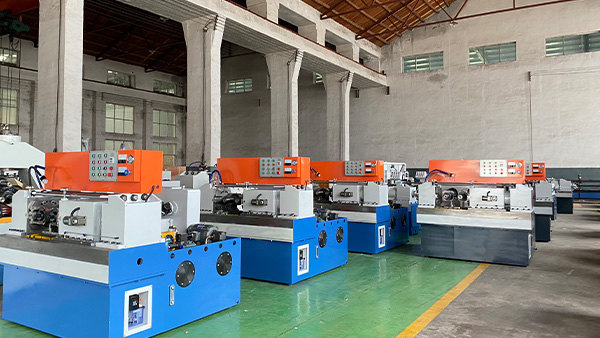
-
 Afrikaans
Afrikaans -
 Albanian
Albanian -
 Amharic
Amharic -
 Arabic
Arabic -
 Armenian
Armenian -
 Azerbaijani
Azerbaijani -
 Basque
Basque -
 Belarusian
Belarusian -
 Bengali
Bengali -
 Bosnian
Bosnian -
 Bulgarian
Bulgarian -
 Catalan
Catalan -
 Cebuano
Cebuano -
 Corsican
Corsican -
 Croatian
Croatian -
 Czech
Czech -
 Danish
Danish -
 Dutch
Dutch -
 English
English -
 Esperanto
Esperanto -
 Estonian
Estonian -
 Finnish
Finnish -
 French
French -
 Frisian
Frisian -
 Galician
Galician -
 Georgian
Georgian -
 German
German -
 Greek
Greek -
 Gujarati
Gujarati -
 Haitian Creole
Haitian Creole -
 hausa
hausa -
 hawaiian
hawaiian -
 Hebrew
Hebrew -
 Hindi
Hindi -
 Miao
Miao -
 Hungarian
Hungarian -
 Icelandic
Icelandic -
 igbo
igbo -
 Indonesian
Indonesian -
 irish
irish -
 Italian
Italian -
 Japanese
Japanese -
 Javanese
Javanese -
 Kannada
Kannada -
 kazakh
kazakh -
 Khmer
Khmer -
 Rwandese
Rwandese -
 Korean
Korean -
 Kurdish
Kurdish -
 Kyrgyz
Kyrgyz -
 Lao
Lao -
 Latin
Latin -
 Latvian
Latvian -
 Lithuanian
Lithuanian -
 Luxembourgish
Luxembourgish -
 Macedonian
Macedonian -
 Malgashi
Malgashi -
 Malay
Malay -
 Malayalam
Malayalam -
 Maltese
Maltese -
 Maori
Maori -
 Marathi
Marathi -
 Mongolian
Mongolian -
 Myanmar
Myanmar -
 Nepali
Nepali -
 Norwegian
Norwegian -
 Norwegian
Norwegian -
 Occitan
Occitan -
 Pashto
Pashto -
 Persian
Persian -
 Polish
Polish -
 Portuguese
Portuguese -
 Punjabi
Punjabi -
 Romanian
Romanian -
 Russian
Russian -
 Samoan
Samoan -
 Scottish Gaelic
Scottish Gaelic -
 Serbian
Serbian -
 Sesotho
Sesotho -
 Shona
Shona -
 Sindhi
Sindhi -
 Sinhala
Sinhala -
 Slovak
Slovak -
 Slovenian
Slovenian -
 Somali
Somali -
 Spanish
Spanish -
 Sundanese
Sundanese -
 Swahili
Swahili -
 Swedish
Swedish -
 Tagalog
Tagalog -
 Tajik
Tajik -
 Tamil
Tamil -
 Tatar
Tatar -
 Telugu
Telugu -
 Thai
Thai -
 Turkish
Turkish -
 Turkmen
Turkmen -
 Ukrainian
Ukrainian -
 Urdu
Urdu -
 Uighur
Uighur -
 Uzbek
Uzbek -
 Vietnamese
Vietnamese -
 Welsh
Welsh -
 Bantu
Bantu -
 Yiddish
Yiddish -
 Yoruba
Yoruba -
 Zulu
Zulu
Comparative Analysis of Roll Thread Machine Prices and Pricing Lists in the Industry
Understanding the Pricing Landscape for Roll Thread Machines
In the manufacturing and machining industries, the demand for precision tools is ever-increasing. Among these, roll thread machines have carved a niche for themselves due to their ability to create high-quality threads with minimal wastage and high efficiency. This article explores the various factors influencing the price of roll thread machines, provides an overview of the current pricing trends, and offers insights into what buyers should consider when evaluating their purchasing options.
The Basics of Roll Thread Machines
Roll thread machines are specialized equipment designed for the cold forming of threads on metal and other materials. Unlike traditional cutting methods, rolling processes do not remove material but instead deform it, producing stronger and more precise threads. This method not only reduces material waste but also enhances the durability of the threads produced, making roll thread machines highly desirable in various manufacturing sectors, including automotive, aerospace, and construction.
Factors Influencing Pricing
Several factors contribute to the pricing of roll thread machines
1. Type of Machine There are various types of roll thread machines available, including manual, semi-automatic, and fully automatic models. Each type comes with a different price point due to the complexity and level of automation involved.
2. Brand and Manufacturer The reputation of the manufacturer plays a significant role in pricing. Established brands with a proven track record of quality and reliability typically command higher prices than lesser-known manufacturers.
3. Specifications and Features Advanced features such as programmable controls, multi-axis capabilities, and enhanced safety measures can increase the cost of the machine. Buyers need to assess whether these features align with their operational needs.
4. Production Capacity The output capacity of the machine also affects pricing. Larger machines capable of handling higher workloads tend to be more expensive. Buyers should align their production requirements with the capacity of the machine.
5. Market Demand and Supply Like any commodity, the prices of roll thread machines can fluctuate based on market demand and supply dynamics. An increase in demand for precision manufacturing can lead to higher prices.
roll thread machine price pricelist

Current Pricing Trends
As of late 2023, the price range for roll thread machines varies widely, typically from $25,000 to over $150,000, depending on the factors mentioned above. Entry-level models with basic features suited for small-scale production can be found at the lower end of this spectrum, while high-end, fully automated machines designed for large-scale operations tend to be in the upper range.
Choosing the Right Roll Thread Machine
When considering a purchase, buyers must evaluate their specific requirements carefully. Key considerations include
- Production Needs Analyze the types of threads required and the volume produced to determine the necessary machine capabilities.
- Budget Establish a clear budget that includes not only the purchase price but also potential maintenance costs and any additional tooling or accessories required.
- Support and Warranty Investigate the manufacturer's warranty and after-sales support options, as these can significantly impact the overall value of the investment.
- Technical Specifications Ensure that the technical specifications of the machine align with the required thread standards and material compatibility.
Conclusion
Investing in a roll thread machine is a significant decision that can drastically enhance manufacturing efficiency and product quality. By understanding the pricing landscape and carefully considering the various factors influencing costs, buyers can make informed choices that align with their operational needs and budget constraints. As the manufacturing sector continues to evolve, the importance of selecting the right equipment to maintain competitiveness cannot be overstated.
